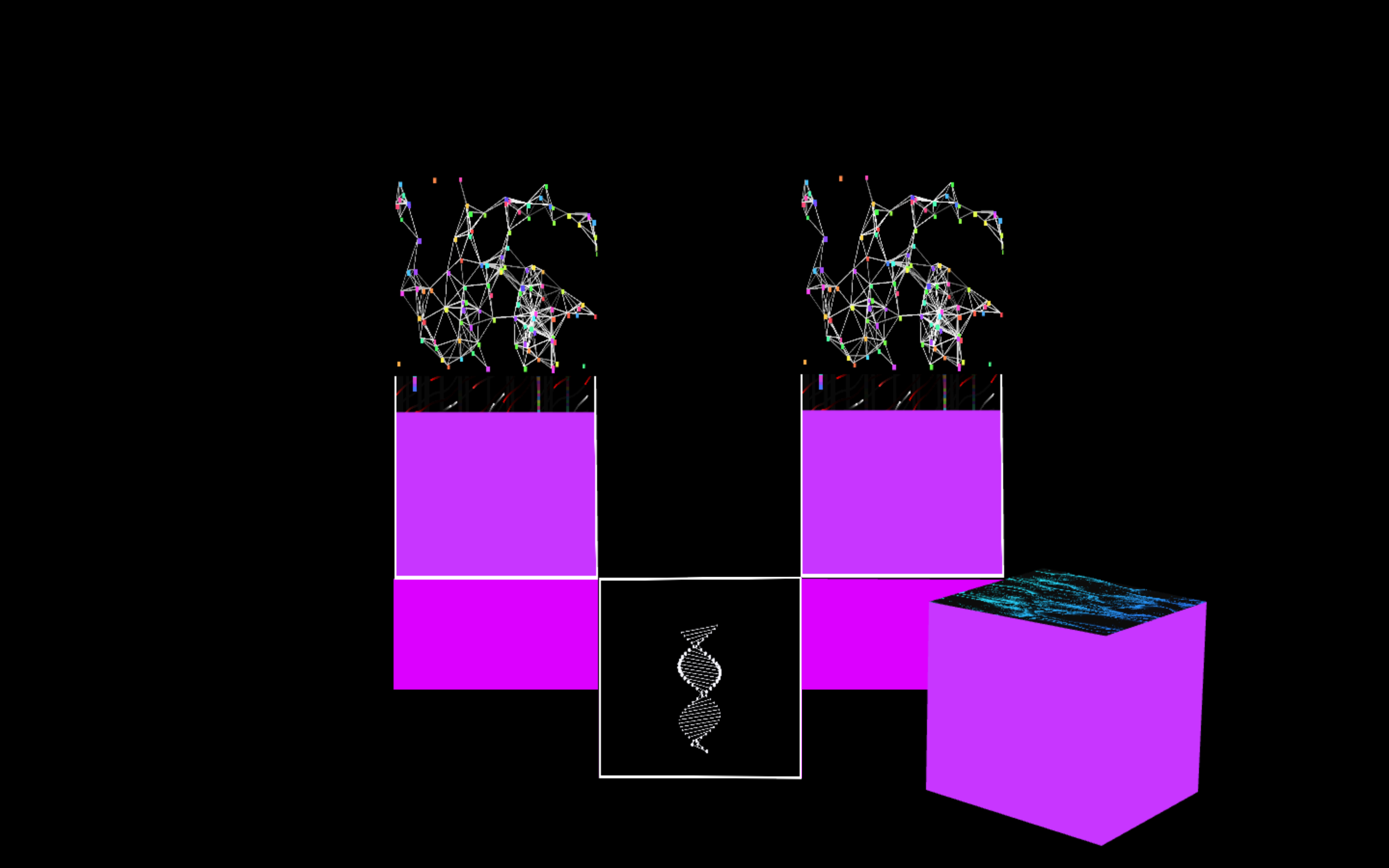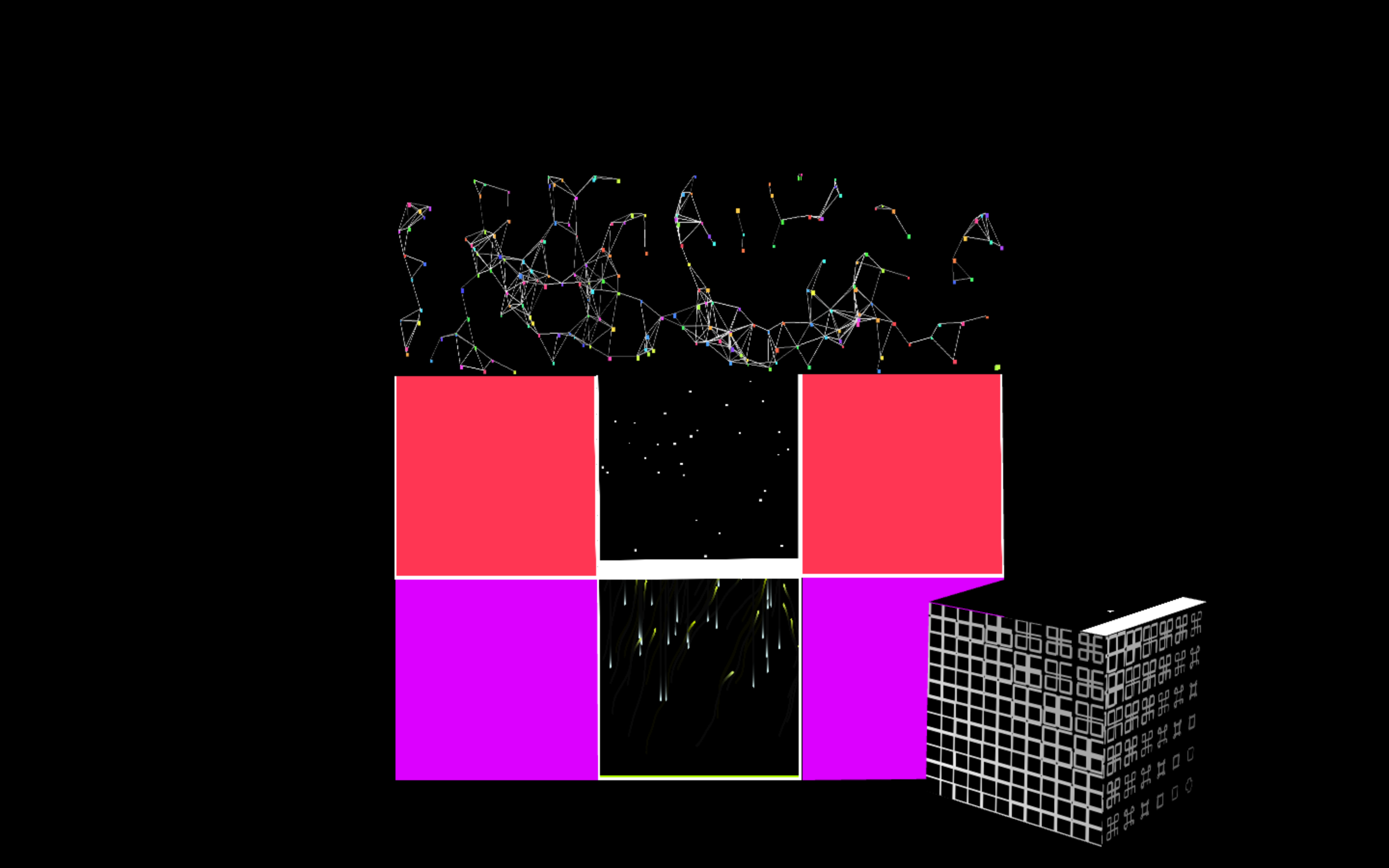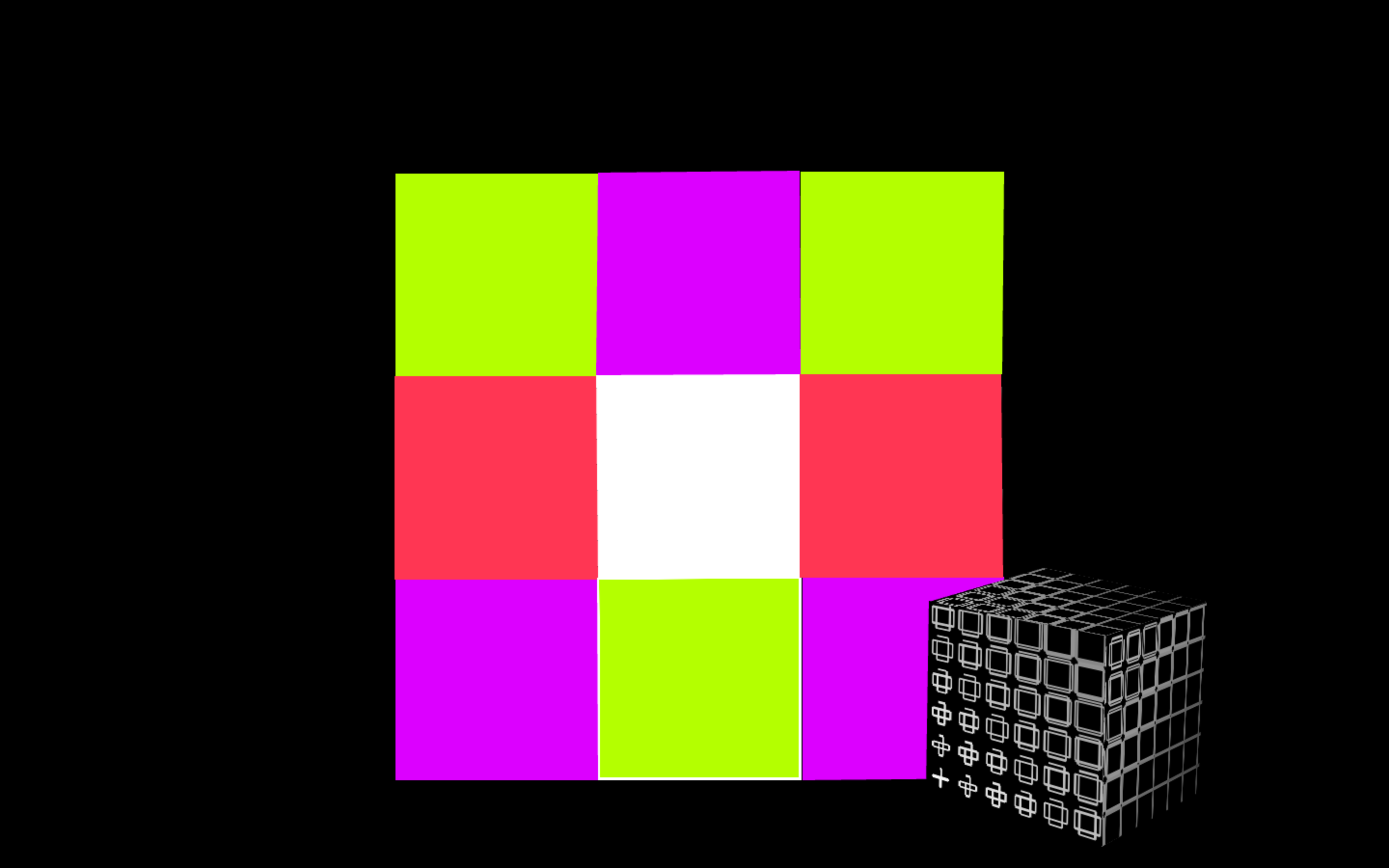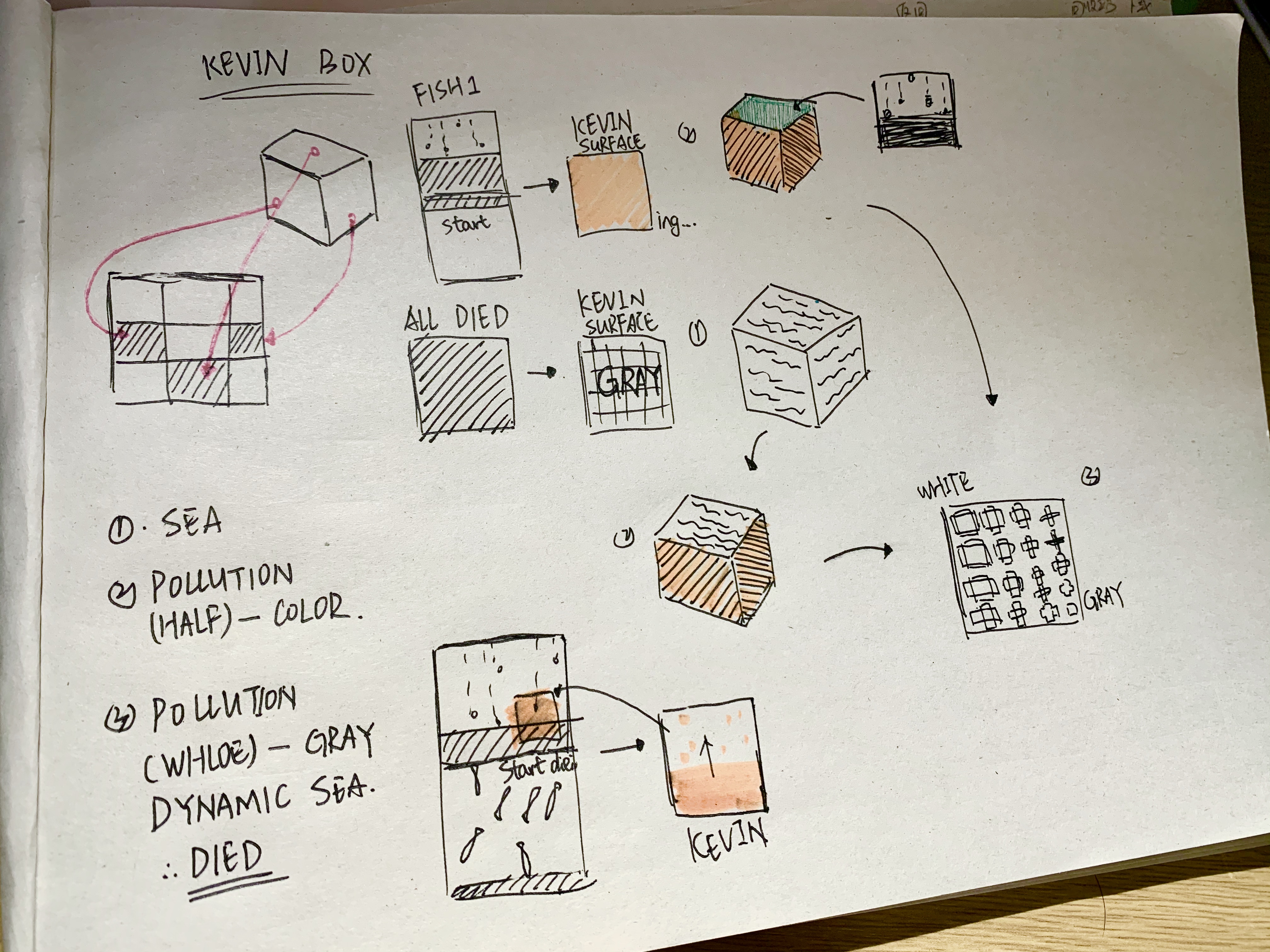The Ocean
This projection-mapped project aims to highlight the impact of marine pollution on sea animals, and encourage reflection on human activity effects on marine ecology.
produced by: Yundan Qiu
Concept and background research
The majority of industrial waste such as sewage, waste food and plastic particles will eventually be littering into the oceans. The waste threatening the lives of millions of sea animals, which not only pollutes seawater, but also be eaten by sea animals. Because of these pollutants, animals may suffer for months or years before they die.
My shape is a wall made of small boxes, which provides me with enough space to demonstrate the life procedure of sea animals from birth in different periods, how the waters where they live are polluted by human activities, to how they extinct.
Each box surface represents one sea area. At first, I created a flowing ocean in the whole wall to express the theme and indicates the ancient earth when there was no life. Later species were born including marine life (fish) and terrestrial life(human) I designed the life cycle of two fishes in two ocean areas to show how marine pollution kills sea animals.
Coastal fishes birth with the beginning of human industrial activities, when different pollutants begin to be discharged from the land to that sea area, and pollute the seawater. When the pollution concentration reached a peak in the ocean, the sea is completely polluted, and coastal fishes could not survive.
Deep-sea fishes born when humans increased their industrial productivity. Microplastic particles are continuously littering into the ocean, then fishes died after eating those particles. The accumulation of microplastic particles on the ocean surface and the bodies of dead fishes gradually destroyed the remaining sea areas.
The last scene described that when the ocean disappears in the future, humans will not be able to survive, and industry will disappear with humans. The earth will become a garbage dump, filled only with various pollutions.
Technical
This projection-mapping piece was made in OpenFrameworks with the ofxPimapper addon. Each element in the scene was individually realized and incorporated in the whole project as a single FBO source to achieve more control over the combination among elements in one scene and story-telling fluency.
Owing to major life procedures of fish are dynamic effects, after mapping all elements of each scene, I adjusted the timeline details of the scene in the JSON file according to the animation time to make the story have stronger cohesive and narrative.
Additional, I prototyped my project on a new ‘dummy object’ I drew, so I can easily adjust JSON parameter in each scene and visualize the final effect in advance.
Future development
In order to make the shape not stiff and monotonous, we put a small tilted box in the bottom right corner of the wall, which can be mapped three surfaces. I use it as an abstract of the evolution of three main sea areas where fishes located. The two surfaces in front are for the coastal fish group and the top one is for the deep-sea fish group. When the sea area is polluted to a certain degree, the seawater becomes the same colour as the pollutant. When the sea animal was extinct, the seawater becomes dirty grey.
After that, I added a piece of background music to match my visuals. The music simulates the ocean feeling and the rhythm changes with scenes changing, giving a more immersive experience.
Self evaluation
In general, through the visualization of the concept, the narrative development of the story, and the arrangement of scenes change, I made a complete project to express the impact of human industrial activities on marine evironment.
Most of the element codes in this project referred and modified to what I learned in the first semester. However, there were some problems occurred in the final mapping process. First, some specific codes failed to run well when compiled all together as FBO sources. The shape and operation of the light frame before the fish born is not smooth. To more practical, the different canvas size and frame rates of each scene seemed hard to aligned, which results in that the screen size and running time of different elements have to be adjusted according to each mapping phase. Also, there are some small miscalculations during the mapping phase, that resulted in a slightly imperfect correspondence between the shape and the mapping images.
For improvement, I can create more sea organisms with different appearances, attributes or colours, not just limited to fish. Also, the type of marine pollution can be more diversified.
References
Reading:
How plastic pollution is affecting seals and other marine life. World Animal Protection. (2017). Retrieved 2 February 2020, from https://www.worldanimalprotection.org.uk/news/how-plastic-pollution-affecting-seals-and-other-marine-life.
Patin, S.A. "Anthropogenic impact in the sea and marine pollution". offshore-environment.com. Retrieved 2 February 2020, from http://www.offshore-environment.com/anthropogenicimpact.html.
Coding:
Harlem Shake, homework code for IS71014B: Workshops In Creative Coding 1, week 5. https://learn.gold.ac.uk/mod/assign/view.php?id=720795.
Pulsating Arcs, example code for IS71014B: Workshops In Creative Coding 1, week 7. https://learn.gold.ac.uk/course/view.php?id=12859§ion=7.
Network, sketched by Samson Goodenough. Retrieved 2 February 2020, from https://www.openprocessing.org/sketch/594763.
Geometric Animations, sketched by Saskia Freeke. Retrieved 2 February 2020, from https://www.openprocessing.org/sketch/416673
Sound:
Ocean Hotel, Uncan. downloaded from Free Music Archive. https://freemusicarchive.org/search?adv=1&quicksearch=ocean&sort=track_date_published&d=1&page=2







































































